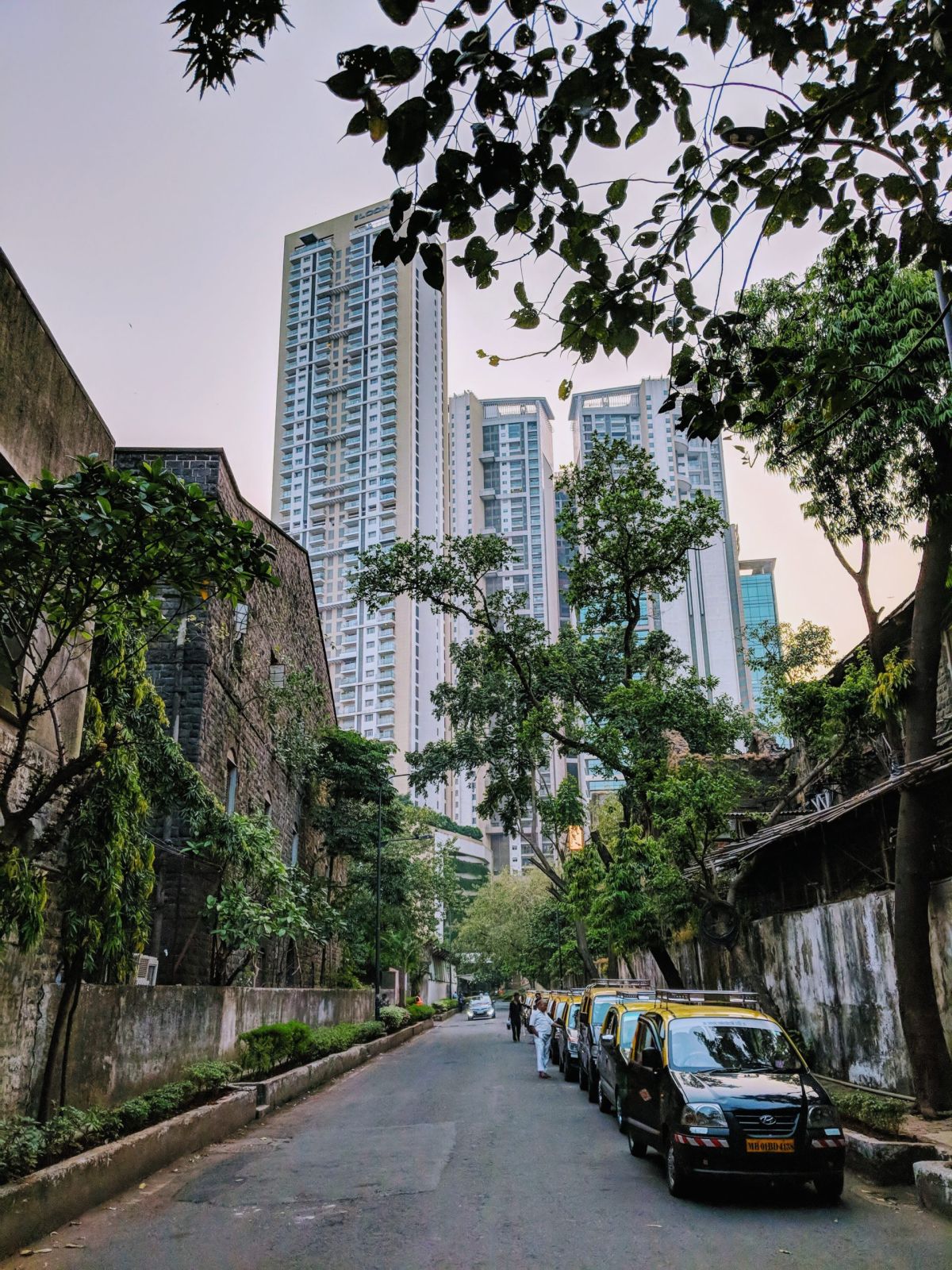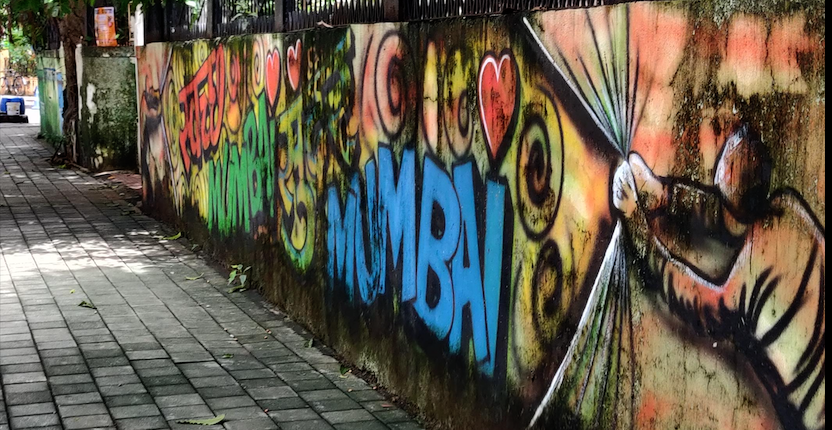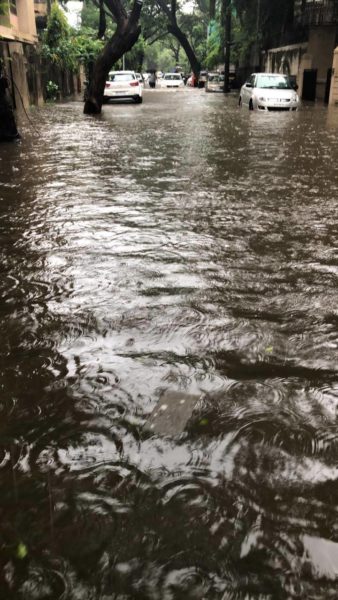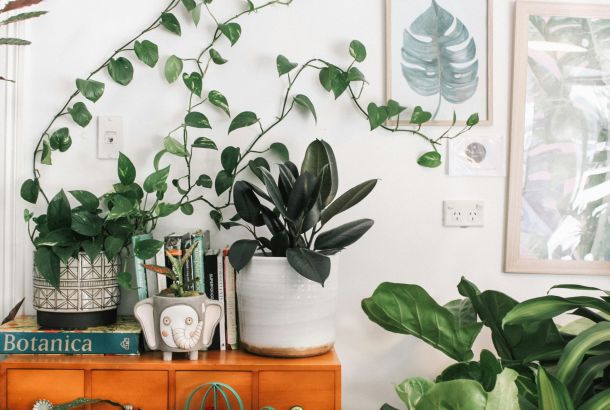Just a random kid from Bombay

Mumbai (formerly Bombay) is known in India as the city of dreams. It’s one of the biggest cities in the world with 12 million people living in the main city and around 20 million in the entire metropolitan area. Once seven fishing islands, today it is the financial hub of India, with people from all ethnicities, cultures, religions and beliefs residing in it. It’s the place I call home.
In 2002 I was born in Delhi, however, at the time my parents lived in Mumbai. Throughout my life, I haven’t had to shift out of that city, until university. Hence I picked up on the little traits we share as a crowd.
We wear flip-flops everywhere, even if it is raining. We constantly carry a backpack – even if you are out just for lunch. During the monsoon season – yes we have a season for rain but it’s not as drab as the British rains – there is a mandatory polythene bag inside your backpack. Occasionally enjoying the fact that the Auto-Rickshaw – again yes that is what it is called, not a bloody “tuk tuk” – driver is crossfaded. To be honest there’s a thrill in the danger of it. And the street food.

Honestly, the street food in Bombay is incomparable to what you would get here. I basically grew up on Vada Pav – or the yassified name of it “Bombay burger.” It’s nothing more than a deep-fried mashed and spiced potato put into a pav (a form of bread) with chutney on either side. Arguably nothing gets better than that. It may not seem like much but it is what most of Mumbai lives on. At the end of every major street or school cafeteria, you’re likely to find Vada Pav.
Mumbai has specific roads that have a lot of delicious food stalls. These are called “khau galli’s”, translating to food streets. For instance, there’s Mohammed Ali road in the southern half of the city. Up in all its glory during the time of Ramadan, people come to the street to break their fast.

Unknown to some, Mumbai has a friendly North-South divide. Neither are like the other, but will defend the city from anyone outside of it. Basically, the North is where the hard-working and often exploited working class and middle classes live. This side has no history to it, it is often called the suburb. But, people in the north of the city are fast-paced and don’t have time to rest. The North is where you see the overcrowded trains that the city is known for. If you see absolute slander in the next part, understand that I am from the north.
In the south, however, it’s for the people who have made it in life. The 1% of the 1% reside here, having privilege just overflow from the top of their heads. The people from here in general have no concept of being on time or being apologetic. They’re annoying.
Despite my loathing for the locals, the South is where the iconic part of the city is. It has the marine drive, nicknamed ‘The Queen’s Necklace’. It is a long stretch of road that goes along the bay, and at night the streetlights reassemble a pearl necklace.

Here also lies CST station, where India’s first railway ran through. Essentially, it’s the only iconic historical monument we have, i.e. ‘The gateway of India’. It’s basically an over-glorified gate, put next to the port where the first British Monarch to visit India docked his ship. That’s about it.
However, there are sites with a lot of history to them, like Horniman’s Circle. Now to a normal person, it’s just a really funny name. Yet, Horniman’s Circle is based on a journalist who wrote for the Bombay Chronicle, being one of the few British people that fought for Indian independence. The man stole British records and published them in his newspaper, illustrating how Indians were being treated. In return, he was deported.

Hands down, the most iconic building in Mumbai has to Antilla. It’s what we look up to, it’s what we have to salute. In simple terms, Antilla is the largest house in existence. Owned by India’s richest man, Mukesh Ambani, with 27 floors. It is also amongst the ugliest buildings I’ve ever seen. As comedian Vir Das put it, Ambani basically owns our electricity, water, politics and all of us. They can literally come forth presenting a new baby in their family like in the Lion King and all of us will gather below screaming ‘The Circle of Life’. It is literally a reflex for me to salute the building while going past it.
Mumbai also has a huge space for art. There’s street art and galleries all across the city. Some political, some just beautiful to look at. Most of which speaks to people. There is also a huge space for performing arts. Multiple theatres such as NCPA and Prithvi have been there for a long time, supporting and adapting alongside the city. There are multiple open mics throughout the city, and I myself have performed at one of them.
The city may not have had any instruments of its own, but it’s made music using everything available. The most obvious example of this is Bollywood. Mumbai runs on the magic that Bollywood creates. You see actors and directors in every nook and corner of the city, with everyone I know having dreamt at least once – “what if I was an actor?”

The only other thing that Mumbai runs more on: cricket. The city is crazy about it. If you go to Shivaji Park, you see a whole ocean of kids playing cricket. From school matches to coaching classes and everything in between. Back in the olden days, selectors would come to this ground to see which cricketer has what it takes to make it big. Old cricketing legends, such as Sachin Tendulkar, have played on this ground.
I went to that ground twice with the school cricket team, got snubbed last minute both games and ended up being a bench warmer, only for us to lose the game horribly. No, I’m definitely not still bitter about things that happened years ago, what makes you think that?
Other than that, there are two stadiums that stand out in Indian Cricket. One’s called Brabourne stadium, named after Lord Brabourne the then governor of Mumbai, made by the Empire. It was the hub of Indian cricket for a long time. It was only knocked over by the Wankhede Stadium, made by Wankhede (we aren’t that good with naming, our local cricket team is called “Mumbai Indians”).

The weather of the city is the most horrendous thing to experience. In the summer you have hot humid temperatures that can go up to 40°C. During that time you just keep sweating as the sun laughs in your face while you go through pain. However, in the winter anything below 20°C is basically freezing. But with monsoons… Mumbai becomes more beautiful than it ever has been. As kids, we would go around finding puddles and making paper boats, whilst hoping that it would rain enough for school to be cancelled the next day. However, there would be days that it would rain so much that you would be scared for your life when the water comes as high as the knee.

But more than anything the best thing about Mumbai is its people. The people make the city. Particularly the Parsi, a religion and a culture based in Persia. A sect that even Marx talked about, the Parsi has given Mumbai a lot of its culture, from its food to its art. On the other hand, you have the Gujaratis, a section stereotypically known to be a part of the business classes. The Marathis, the original community to have been in Mumbai. And then literally everyone else.
Literally, people from all over India would be found in every part of Mumbai. And Mumbai would probably be the city that accepts everyone the best. A city where though everyone is different, everyone still feels like one.
Nowhere was that feeling of oneness more evident than 26/11. An event that took place in 2008, when I was just 6, but an event I can still remember. I was playing hide and seek with my friends, and suddenly everyone came out excitedly as we saw a rainbow. Suddenly we saw a police van, a fire engine and an ambulance all with their sirens on go past us. Obviously confused, but with no clue yet we just excepted a fire. However, on returning home we realised that the city had become a victim to a terrorist attack.
People who were then claimed by a Pakistani Terror group, had entered the city in a fishing boat and began shooting people in its most populated areas. Then they hid inside a hotel right next to the Gateway of India. In that moment the once-great city of Mumbai was brought to its knees. Many people lost someone that day, but as a city, we knew that eventually, we would make it out of it.
Mumbai has so much to offer to the world. The arts, history, culture, sports, cuisine, and ultimately the strength and kindness of the people. These are the things I miss about Mumbai. The city, for me, has nothing that comes second to it. Obviously for me it is home. This article does not do justice to what the city is, however, I hope I provided a glance into what life is like in Bombay, the good and the bad.







